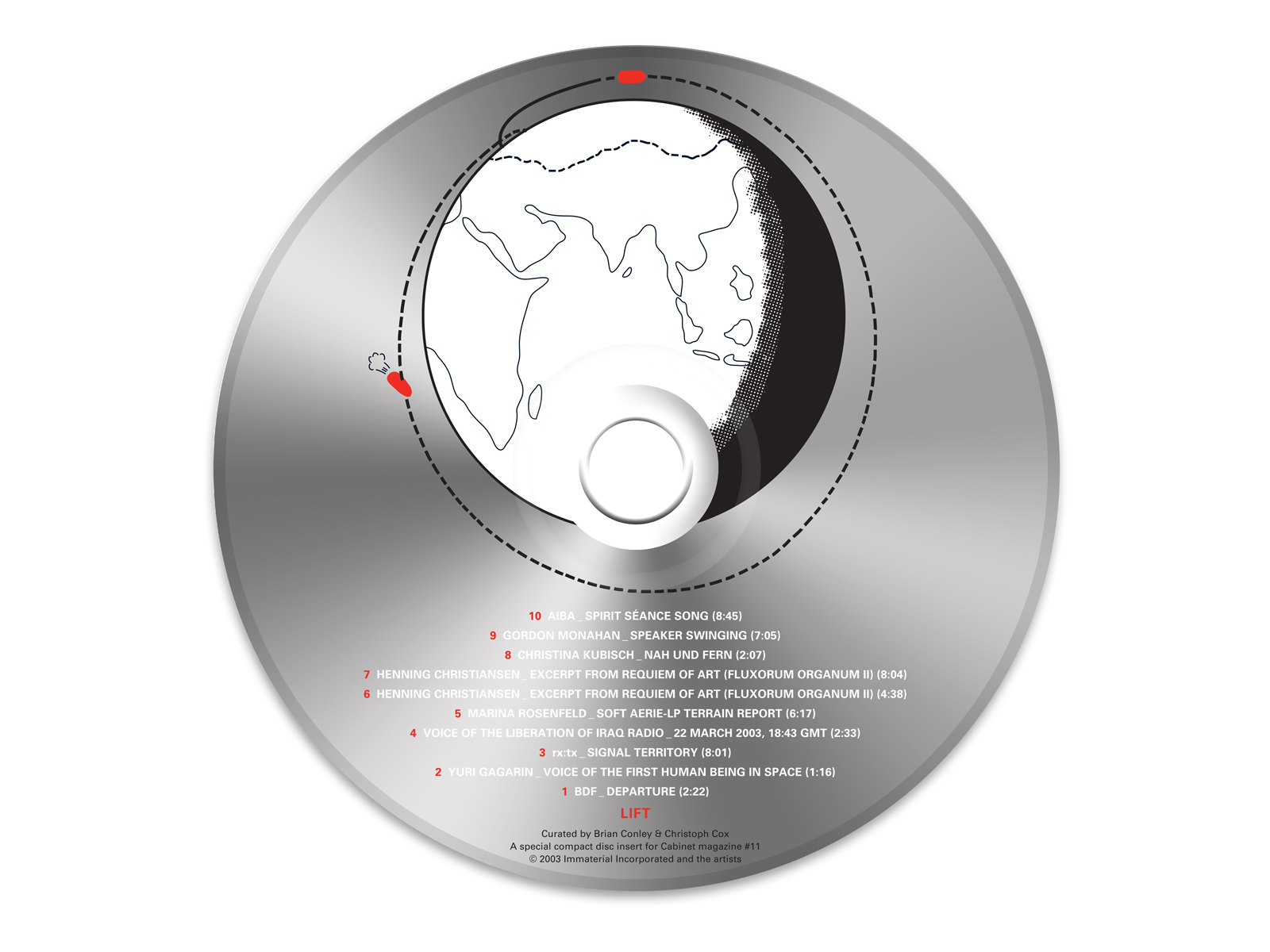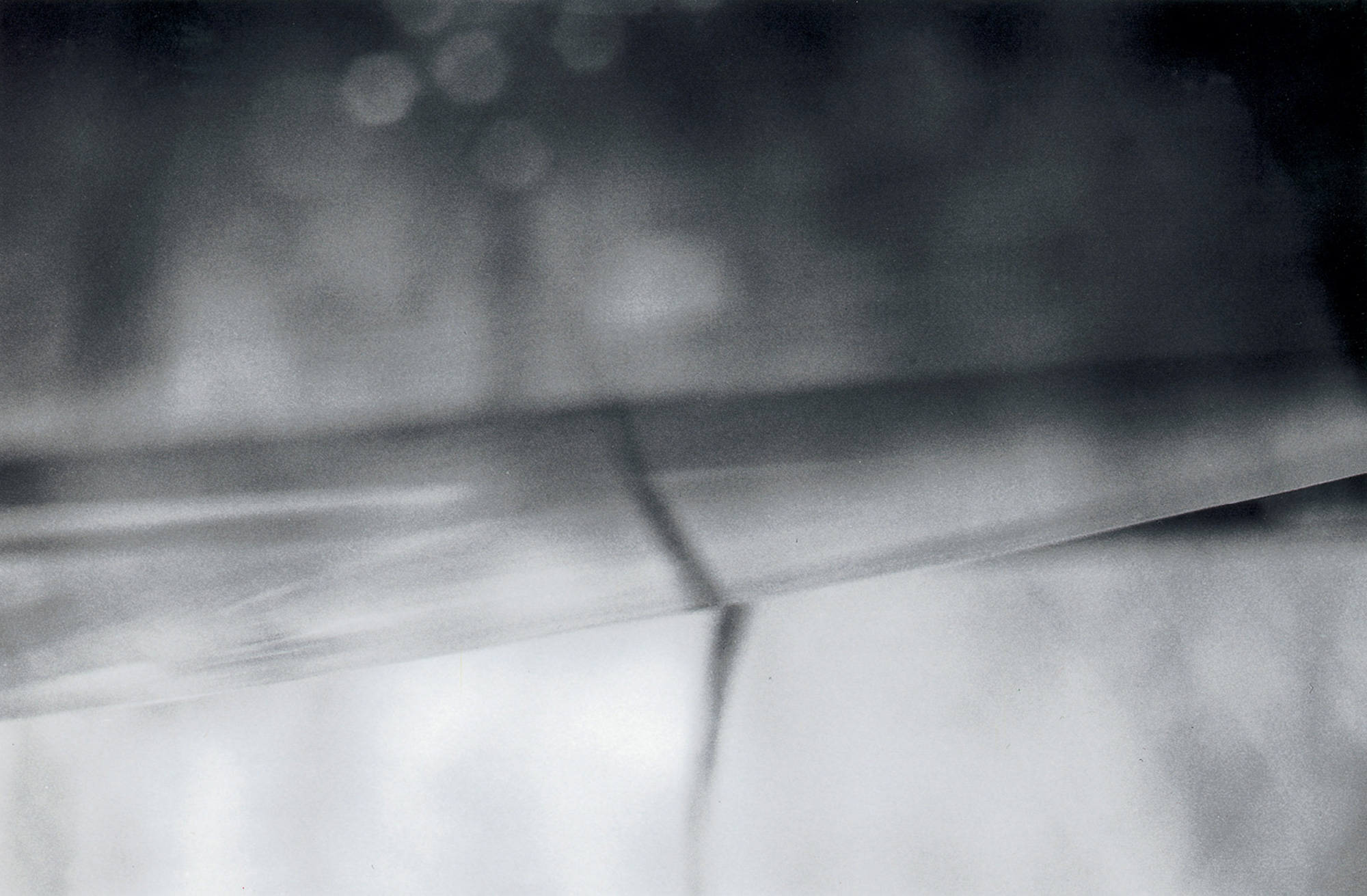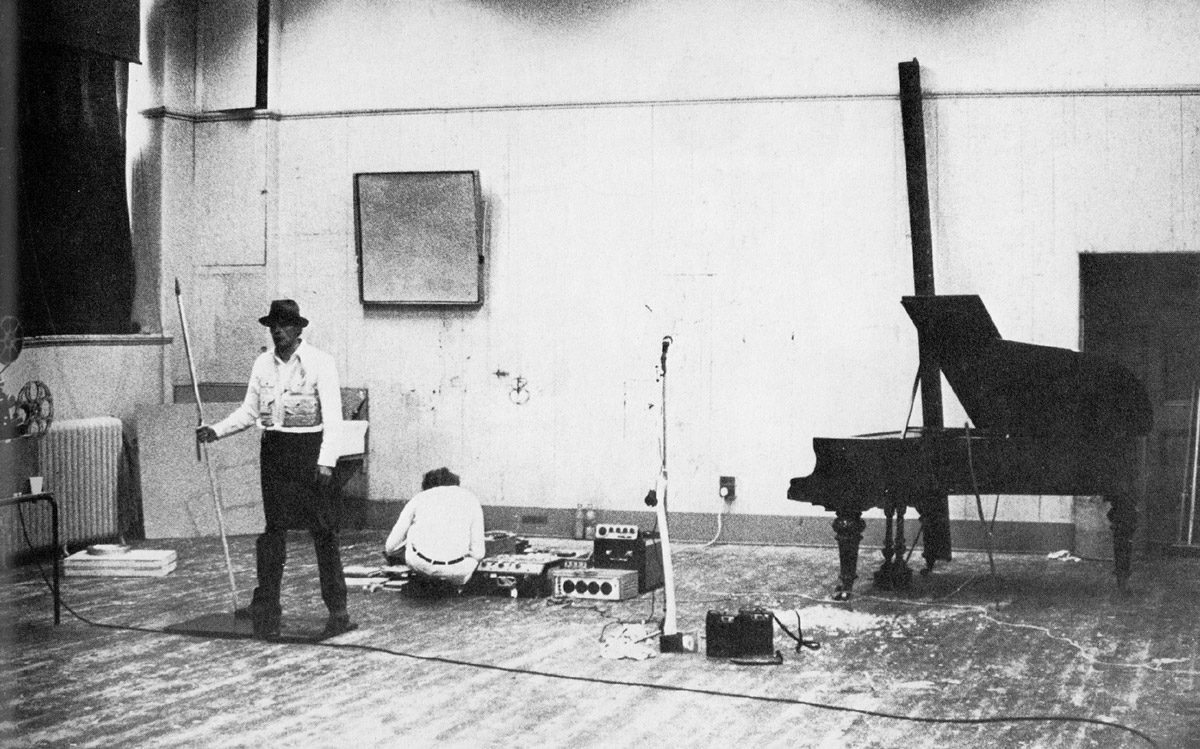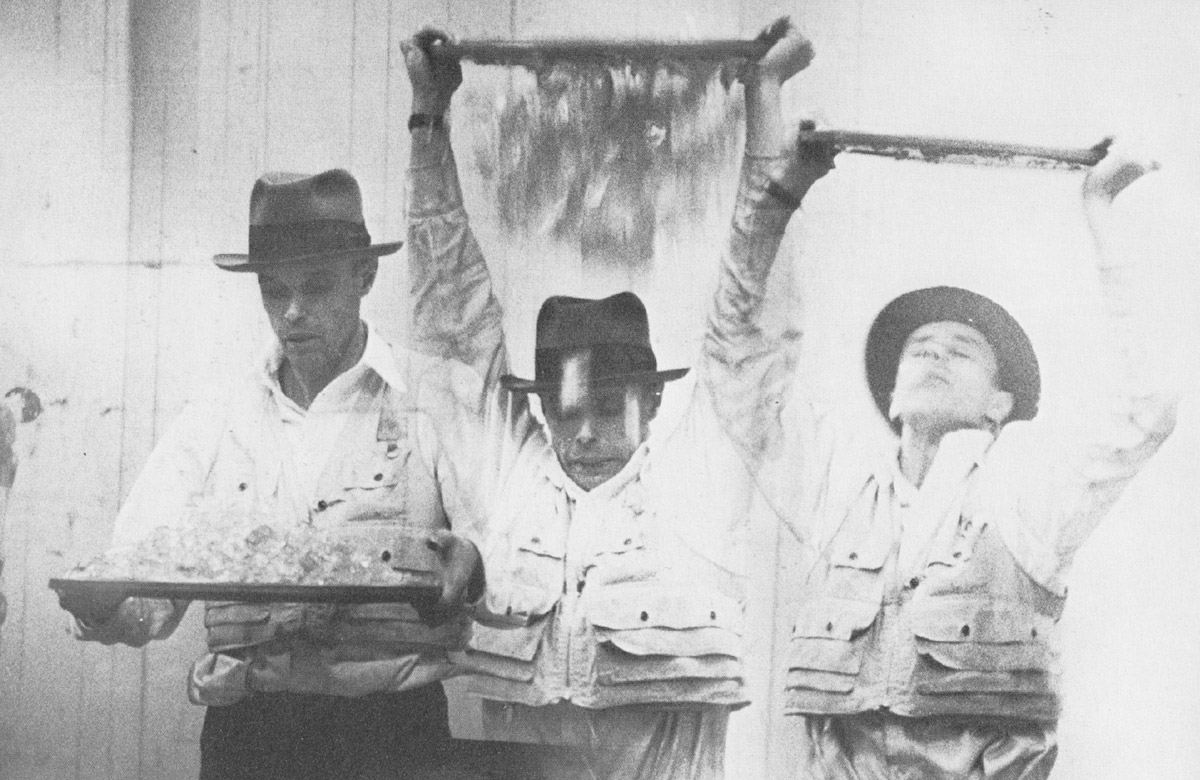CD Insert / Lift
Airborne audio
BDF, Yuri Gagarin, rx:tx, Voice of the Liberation of Iraq, Marina Rosenfeld, Henning Christiansen, Christina Kubisch, Gordon Monahan, and Aiba

Entire CD

1. BDF, “Departure”
“Departure” is a composite of three sources: a slice of found sound, an excerpt from Daniel Warner’s “Airports for Music” (drawn from field recordings of airport exteriors), and Fugitive Pope’s “560 m.p.h. at 30,000 ft.” (inspired by a red-eye flight and composed on a Buchla analogue modular synthesizer). The two latter pieces can be heard in full on Cabinet’s website at cabinetmagazine.org/art/soundart_index.php.
2. Yuri Gagarin, “Voice of the First Human Being in Space”
On 12 April 1961, Soviet cosmonaut Yuri Gagarin was launched into space aboard the spaceship Vostok. Gagarin orbited the earth at 18,000 miles per hour for 108 minutes, during which he periodically radioed back to earth. In its news broadcast that evening, Radio Moscow carried excerpts from Gagarin’s transmissions: “I can see the earth. Visibility is good. Can hear you excellently. Flight proceeds well. I can see the earth. Visibility is good ... I can see everything. Some of the space below is overcast with cumuli ... I am continuing in flight. Everything is normal. Instruments are functioning excellently. Everything is in good order. My flight is progressing ... Feeling fine. My spirits are high. I am continuing in flight. Everything is going well. The machine is functioning normally.” Recording courtesy of Steve Roden.
3. rx:tx, “Signal Territory”
rx:tx was launched in April 2002 in Gwangju, Republic of Korea, with the presentation of the first two editions, “Signal Territory: Signal Territory I” and “Jadviga: Nonim” during the opening of the Gwangju Biennial. The label was established by a group of Slovenian conceptual and sound artists, computer engineers, and architects, working mainly in the electronic music field. rx:tx is formally a division of Zavod Projekt Atol, a non-profit art production organization founded in 1994 which manages diverse artistic and scientific projects, among them the makrolab and the INSULAR Technologies initiative. rx:tx works closely with space-related institutions, such as the Yuri Gagarin Cosmonaut Training Center Zvezdni Gorodok, Center for Flight Control, Korolev, State Rocket Center “Academician V. P. Makeyev Design Bureau,” and the M.I.R. European initiative to facilitate art, technology, and science collaborations in space and zero gravity-related environments.
4. Voice of the Liberation of Iraq, “22 March 2003, 18:43 GMT”
Below is an excerpt from ClandestineRadio.com’s website in April 2003: “Following the 2003 invasion of Iraq, the Voice of the Liberation of Iraq is playing an important role in the coalition’s psychological war strategy. Between psy-op messages aimed at enlisted soldiers and Republican Guard officers urging them to defy orders from Baghdad, to surrender properly, to avoid actions that could lead to charges of war crimes, and to refrain from destroying the country’s natural resources, the station pumps out militant martial music. Its programming is highly reminiscent of the CIA’s Operation Sherwood, which applied intense pressure on Guatemala’s leftist government in 1954 through radio broadcasts that ultimately led to the president’s overthrow. The radio station portrays itself as guerilla-run by the ‘Iraqi opposition.’ Sources based in Iraq say the Voice of the Liberation of Iraq is likely a product of US intelligence that is attempting to soften the resolve of Iraqi troops based in Iraqi Kurdistan. Members of the Iraqi pro-democratic opposition contacted by ClandestineRadio.com and Clandestine Radio Watch claim no knowledge of the station and its operations.”
The sample included on this CD is a call to the Iraqi Air Force. It states that Saddam Hussein has used the people of Iraq for his own benefit and that ridding Iraq of Saddam is the best solution. It states that the coalition forces are not here to hurt the people of Iraq or Iraqi fighters and recommends that the Iraqi air force follows these orders:
1. Face your planes to each other.
2. Don’t let ground air defense forces use their weapons against coalition aircraft.
3. Move away from the base and go back home to your wives and children.
4. Don’t fight coalition troops.
By Nick Grace (Washington) with Takuya Hirayama (Japan) and translation by Tarek Zeidan (Egypt), all of ClandestineRadio.com.
5. Marina Rosenfeld, “Soft Aerie-LP Terrain Report”
In much of her audio work, Marina Rosenfeld records processed sound-fragments onto acetates—one-off vinyl records—that she mixes in multi-turntable live performances. After the acetates are cut, Rosenfeld inspects them through a microscope. Here, she offers a sonic interpretation of this microscopic landscape—“a kind of aerial map of the vinyl LP surface, like a bird’s-eye view or a satellite’s (audio-)image of the grooves, hollows, and pockmarks of this very complex shiny terrain.”

6–7. Henning Christiansen, “Excerpts from Requiem of Art (fluxorum organum II)”
Danish composer Henning Christiansen worked closely with Joseph Beuys from the late 1960s until Beuys’s death in 1986. Flight figured centrally in Beuys’s aesthetic mythology. A combat pilot during World War II, Beuys is said to have been shot down by Russian gunfire in the Crimea, where he was rescued by nomadic Tartars, who rubbed him with fat and wrapped him in felt materials that became prominent in Beuys’s artistic output. Airplane sounds figure centrally in this piece, written for Beuys’s action Celtic (Kinloch Rannoch), performed with Christiansen in Edinburgh in August 1970. Christiansen sat on the ground manipulating five tape recorders. Beuys drew a few letters on a small blackboard, then slowly pushed it around the floor with a pole. Films featuring Beuys and the Rannoch Moor in Scotland were projected on the wall. Then, for ninety minutes, Beuys peeled bits of gelatin from the walls and placed them in a tray. In the climactic conclusion, he dumped the tray of gelatin over his head and then stood still for forty minutes holding a pole and looking like a centurion. In the first excerpt, amid the sounds of airplanes, ship horns, organs, chain-gang hammers, and church bells, a woman’s voice delivers a solitary monologue: “Like a mummy, his legs were wrapped with narrow strips of rags. A hunched, gaunt, naked human being, in whose long hair, hanging down to his sides, was stuck dried leaves, dust, and thorns. Around his hips and knees, he wore straw-mud and shreds of linen. His loose, earth-colored skin hung like rags around his fleshless limbs. Dried-out, bleached-out, with rods, hair, cave, relic, mummy, burned-out fire, ashes.”


8. Christina Kubisch, “Nah und Fern”
“In 2001, I had a residency at the Djerassi Foundation in California. The place is in the middle of the Santa Cruz mountains, very isolated and almost without inhabitants. I expected silence, loneliness, isolation. But isolated places are best for planes—all kinds of them, from small ones to jumbos. Every fifteen minutes or so, a plane passed by, though the people living there said they did not hear them anymore. I quickly learned to distinguish the planes by their sounds; and I recognized the answers the birds and other animals were giving to the noisy visitors in the sky. This short piece—the encounter of a plane and a coyote at night—is mixed from original recordings in the Santa Cruz Mountains.”
Produced with the support of the Electronic Studio of Berlin Technical University. Mastering by Onnen Bock.
9. Gordon Monahan, “Speaker Swinging”
“‘Speaker Swinging’ is an experiment for three or more swinging loudspeakers and nine audio oscillators. It was first inspired by hearing Trans Am automobiles cruising on a hot summer night with heavy metal blaring from the windows. As the cars cruised by, there was that fleeting moment of wet, fluid music when one tonality melts into another. I also enjoyed hearing small aircraft flying at low altitudes. Ever since I started working with analogue electronic synthesizers in the mid-1970s, I couldn’t help but notice the similarity in sound of a small plane flying by and two low-frequency sawtooth oscillators tuned slightly apart. I often use this effect in ‘Speaker Swinging’—the physical movement of the speakers flying by while broadcasting slightly out-of-tune oscillators. The subsequent acoustical processes of phasing, vibrato, and tremolo are fundamental to the work, as are the elements of sweat, struggle, fear, and seduction. ‘Speaker Swinging’ grew out of a desire to animate the typical electronic music concert and, in effect, to realize the loudspeaker as a valid electronic music instrument in itself. The rotary speaker motion and the corresponding Doppler shifts can become metaphors for the molecular movements of electrons that occur within solid-state tremolo and vibrato circuits. It mimics these miniature processes that not long ago were modeled on human-scale mechanical-acoustic systems. By making reference to the atomic, it necessarily acknowledges the celestial.”
10. Aiba, “Spirit Séance Song”
Steven Feld, who made this recording in 1977 in Bosavi, Papua New Guinea, writes: “Like many Melanesians, the Bosavi people of the Papua New Guinea rainforest imagine themselves to inhabit one side of a reflection world. The image is of a world that reaches to the top of the forest canopy only to touch another, the same but upside down. Birds have the unique ability to move in between and show through from one side to the other. And so birds, into whom Bosavis will turn upon death, are called ‘gone reverberations’ or ‘gone reflections.’ They are spirit voices and images, absences transformed into presence, as seen and heard in everyday forest avifauna. In local ceremonies, Bosavi people costume and sing to turn themselves into birds so as to make a special contact with this spirit world. And in spirit séances, where bird spirit voices come through a medium, local people can come into contact and converse with the echo presence of the other side.”
This track, sung by Aibo, is drawn from the 3-CD set Bosavi: Rainforest Music from Papua New Guinea, issued by Smithsonian Folkways Recordings in 2001, and produced, recorded and annotated by Steven Feld.

This CD was curated by Brian Conley and Christoph Cox.
Thanks to Henning Christiansen, Christa Cox, Andrew Deutsch, Steven Feld, Peter Nesbit, Linda Norden, Steve Roden, Peter Rostovsky, Andrew Fremont Smith, and Srdjan Jovanovich Weiss.
Henning Christiansen is a Danish composer and visual artist who was a key figure in the European Fluxus movement. During the 1970s and 1980s, he worked closely with Fluxus compatriots Joseph Beuys, Nam June Paik, and Bjørn Nørgaard. He lives in Denmark.
Brian Conley is an artist in New York and an editor-at-large at Cabinet.
Christoph Cox teaches philosophy at Hampshire College and is an editor-at-large at Cabinet. He is the author of Nietzsche: Naturalism and Interpretation (University of California Press) and is currently working on book projects on sound art and the philosophy of music.
Steven Feld is professor of music and anthropology at Columbia University. His recordings include Bosavi: Rainforest Music from Papua New Guinea (2001), Bells and Winter Festivals of Greek Macedonia (2002), and Bright Balkan Morning (2003). His books include Sound and Sentiment (1991), Music Grooves (1995), and Senses of Place (1997).
Yuri Gagarin was a Soviet cosmonaut who in 1961 became the first human being to venture into outer space. He died seven years later in an airplane accident.
Gordon Monahan is a Canadian sound artist whose works for piano, loudspeakers, video, kinetic sculpture, and computer-controlled sound environments span various genres from avant-garde concert music to multimedia installation and sound art. He lives in Berlin.
Marina Rosenfeld is a sound artist who lives in Brooklyn. Her audio installations have recently been featured in the 2002 Whitney Biennial and in Creative Time’s “Sonic Garden” exhibition at the World Financial Center. Her recordings include theforestthegardenthesea (1999) and The Sheer Frost Orchestra: Drop, Hop, Drone, Scratch, Slide & A for Anything (2001).
rx:tx is a division of Zavod Projekt Atol, a non-profit art institution founded in 1994 in Ljubljana, Slovenia, by Marko Peljhan.
Spotted an error? Email us at corrections at cabinetmagazine dot org.
If you’ve enjoyed the free articles that we offer on our site, please consider subscribing to our nonprofit magazine. You get twelve online issues and unlimited access to all our archives.